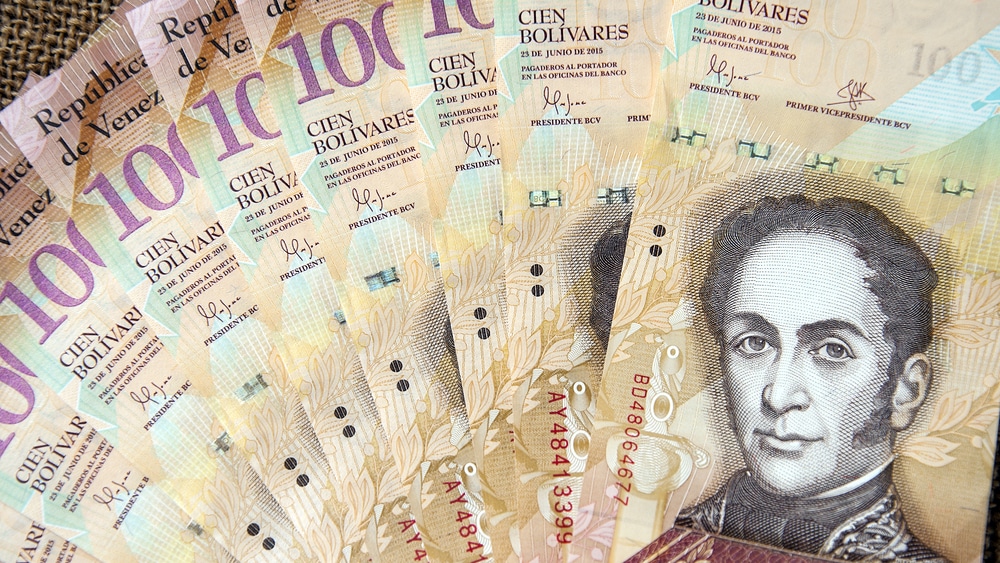
100 bolívar bills. File photo.

Orinoco Tribune – News and opinion pieces about Venezuela and beyond
From Venezuela and made by Venezuelan Chavistas

100 bolívar bills. File photo.
Daily transactions in dollars in Venezuela are experiencing a decline of around 21% this year, after a rebound in 2022. Specialists attribute this drop to the efforts of the government to popularize the use of the national currency, bolívar, or rather to stop the de facto dollarization, according to the Spanish media EFE.
A survey carried out by the firm Ecoanalítica in ten of the largest cities of Venezuela showed that the US dollar was used in about 66% of all transactions at the end of 2021, but dropped to 45% in the same period of 2022, while transactions in bolívars rose from 34% to 55% during the same period.
Jesús Palacios, an economist and professor consulted by EFE, stated that the sectors that were once “very dollarized,” such as household appliances, spare parts, and electronics are now getting significant payments in bolívars. He added that at the beginning of 2022, several companies “got 70% of their earnings in dollars, and now they get 80% in bolivars.”
Meanwhile, according to a Datanálisis report, 70 % of the payments in the country are made in bolívars and the rest in other currencies, opposite to the monetary situation just a year ago.
According to the pollster, this reduction is mainly due to the entry into force of the Tax on Large Financial Transactions in March 2022, which imposes a 3% tax on all transactions made in foreign currencies, regardless of the amount.
Limited dollarization
According to Palacios, the government of President Nicolás Maduro took “additional measures” to reduce the use of the US currency, such as the suspension of bank transfers in dollars and the increase of the commission for withdrawals, which was raised from less than 1 % to 3.8 %.
Palacios opined that the government took these measures in order “not to lose the capacity to make monetary policy” and to grant some maneuvering capacity to the Central Bank of Venezuela (BCV).
“If the government allowed dollarization to go on infinitely, it would lose the power to use the bolívar as a lifeline, as a lender of last resort,” he stated. “The government is avoiding that situation by giving more space to the bolívar.”
From his point of view, the intention of the authorities is to “limit dollarization” and not to end it, since the easing of the monetary policy has allowed “dynamism in the economic activity and, above all, the commercial activity, which has mainly experienced a great rebound.”
“Limited dollarization means, probably, below 50% or 40 % of transactions, and, above all, not allowing it to be used too much in the financial system, not granting loans in dollars, and suspending foreign currency transfers,” the economist added.
Prices fixed in dollars
However, the increase of the use of bolívars in daily transactions in Venezuela has not translated into the sphere of prices of goods, which continue to be fixed in dollars due to the devaluation of the national currency.
According to the BCV, between March 10, 2022 and March 10, 2023, the bolívar experienced an 82% devaluation against the US dollar. In the same period, the exchange rate of the dollar against the bolívar increased 457%, going from 4.33 bolívars to 24.14.
Palacios warned that the stability experienced by the Venezuelan currency during the first two weeks of March is “temporary,” which may be attributed to the increase in the demand for bolívars due to income tax payments, which must be made in the national currency.
According to his estimates, once this situation is over, it will be difficult to maintain stability. The exchange rate may even rise to 50 bolívars per dollar by the end of 2023.
Translation: Orinoco Tribune
OT/SC/AF
Support Orinoco Tribune team’s unique, amazing, and unmatched work!
5.5 years providing honest and responsible anti-imperialist information about the Global South!
66 months working for you, 18.5K posts published, 60 original pieces in the last 4 months, 21 YouTube interviews over the last 12 months, and much more to come!
Your donations make a big difference!